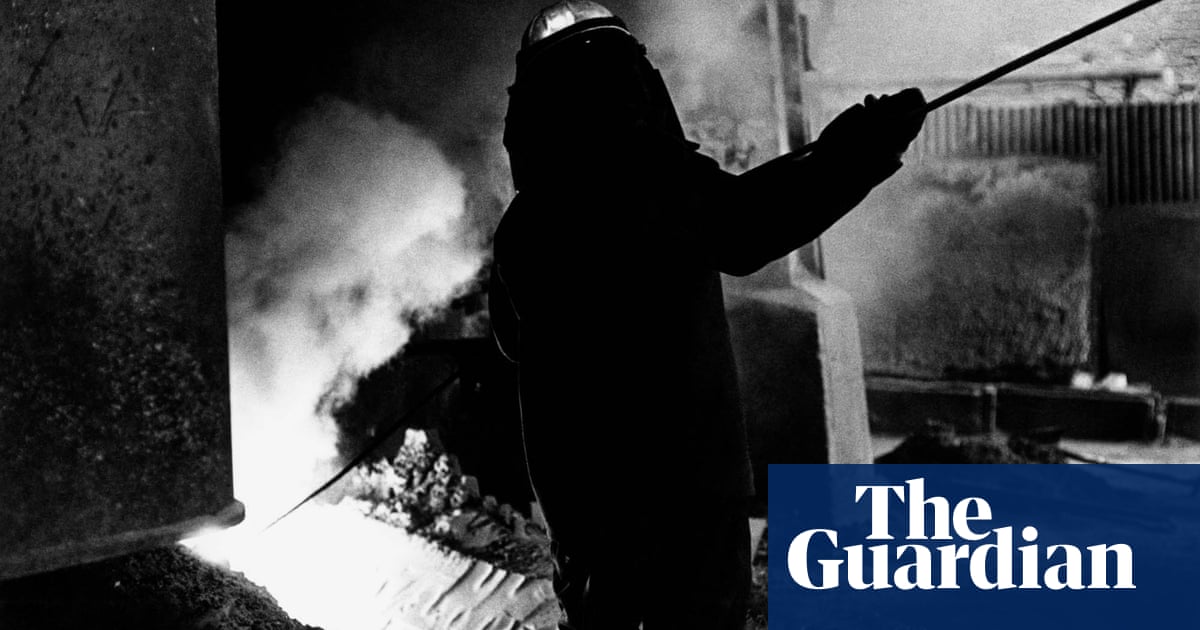
n the fifth episode of Mrs America, the flashy nine-part series that follows the political struggle surrounding the ratification of theEqual Rights Amendment in 1970s America, arch-conservative Phyllis Schlafly, played imperiously by Cate Blanchett, is readying herself for a television debate about motherhood.
Schlafly is wearing a knitted two-piece in bright tangerine, as she often did, and a small silver crucifix. Moments before walking on to the set, she switches the small cross for a large wooden one. Visually, it’s jarring – the skirt suit is hip, the crucifix is pious – but this is the point. “It’s a distraction – it says listen to me, I am a Catholic. But because of its size, it also says I am the best Catholic,” says Bina Daigeler, the show’s costume designer.
No one knows if the real Schlafly switched crucifixes, but we do know she wore something similar during the debate. Ditto the prim twinsets, pins and pearls seen on The Phil Donahue Show and at the protests, all replicas of what she wore in real life. “These details give you such a clear idea of who she was – and this is exactly who she was. She knew how to present herself in a certain way. She often played with [the truth]. So we had to copy that moment in order to be truthful ourselves,” Daigeler says.
If clothes could talk, Mrs America would tell us a lot about what it was like to be a woman – young or old, black or white, rich or poor – in the 1970s. Set over a 10-year period, we meet them from either side of the movement. Among those pushing for women’s liberation are black presidential candidate Shirley Chisholm, Democratic congresswoman Bella Abzug, Feminine Mystique author Betty Friedan and. of course, the world’s most famous feminist, Gloria Steinem. Leading the fight against them is the Stop ERA team headed up by Schlafly, the Mrs America of the title, whose frightening ascent is the backbone of the story.
The culture war Mrs America chronicles is still being fought today. Fashion fetishises many eras, perhaps most particularly the 1970. But while Steinem’s wardrobe would not look out of place in recent collections from Celine and Chloé, the story Mrs America tells puts paid to the idea that it was all fun and frolics, while paying close attention to the significance and symbolism of the clothing.
There are a lot of characters to digest, so divisions are drawn quickly and plainly. For the conservatives, it’s all pie-crust collars and restrictive pussy-bow ties; for the libbers, it’s open cheesecloth shirts and drawstring necklines. The rightwingers wear pastels and florals, the leftwingers wear brights and stripes. The homemakers tend towards skirts, the feminists wear trousers.
Some characters are more complicated. During her presidential run, Chisholm wore gold jewellery and printed skirt-suits, Thatcher-esque trappings of a would-be leader. Daigeler copied and printed the exact patterns on to replica pieces. “If you have the courage to do what she did, then you would dress like a queen, with loud Afro-American patterns and immaculate tailoring,” says Daigeler. “She really stood out from the men in their suits.” The use of silk instead of the heavy 1970s fabric Chisholm would have worn, was simply “to elevate and modernise how she looked”, Daigeler says.
“We don’t always know what women like Shirley wore in the privacy of a hotel room, but we do know that although she is let down by the libbers, she was never going to end up in sweatpants.” From the use of prints, to her cream suits, Chisholm used her clothing as both a shield and a statement about civil rights. “These are iconic moments that everyone can Google, so you have to get it right,” says Daigeler.
Friedan and Abzug represent the older guard, a distinction that is pin-sharp in their clothes. Friedan was as famous as Steinem, but in competition with her youth, a source of tension precipitated by one blue floral dress – found by Daigeler on Etsy – which Friedan wears on a date. It is elegant but old-fashioned. “Does it bother you that we’re not radical any more?” asks Abzug later, wearing a similar chintzy get-up. Abzug is never without a hat – her mother tells her to always wear one so she isn’t mistaken for a secretary.
She was also, in her own words, “born yelling”, and her polka-dotted dresses made her briefly “the most recognisable woman in US politics” according to a 2019 biography. In 1970, only 14 of the 435 House members were women (there are now 101), and while most of them tried to look inconspicuous, women like Abzug and Chisholm stood out by being unashamed of dressing in bold ways.
By contrast, the contradictions of Schlafly’s position – she was the “sweetheart of the silent majority”, but she also had a career and domestic servants who did the bulk of the homemaking work – are there in the contrast between her clothes and her accessories. She wears a uniform of knitted skirt suits and twinsets in bouclé and tweed, typical conservative wife-wear. If Schlafly weaponised her crucifix in public, she did the same for her pearls, neckties and Reagan’s MAGA pins, all based on what she wore in real life.
The widespread availability of archive photography on the internet is both an aid and a challenge to costume designers looking to re-create the wardrobes of real people. Most of the costumes were handmade, even Steinem’s jeans, although some pieces were vintage, including a Diane Von Fustenburg wrap dress, and Yves Saint Laurent skirt. Blanchett’s Schlafly wears a vintage Oscar de la Renta dress to a gala similar to one real-life Schlafly wore to another event.
“It is set in the past but it is a modern story”, explains Daigeler. “I wanted it to look realistic but also contemporary because what the show represents is still current for younger generations. The audience needs to identify with the struggle, to see how each woman is trying to make their own way and fight”. She adds: “I never wanted it to feel like a costume show.”
Schlafly used her appearance as a subversive tool to suggest what she presumably could not say. We don’t know what she wore at home – her daughter, Cori, recently told Vanity Fair: “I never saw her in her pyjamas.” But she is always “presentable”. Even as menopause hits, she sweats into a slim-fitting silk blouse.
Steinem’s wardrobe makes the contrast with Schlafly all the clearer. Her Aviators-over-hair look became a brand. “Gloria looked aspirational, and I wanted the younger generation to see that. I wanted to empower them with the costumes. After all, we still don’t have equal rights.”
In wearing the “masculine” specs and the tight jeans, Steinem sets a precedent that encourages women to exert ownership over their bodies that might otherwise look like mere distraction. This seems like a connection to abortion, one of the main plotlines; reproductive rights are still a major battleground in the US.
As the movement’s (reluctant?) sex symbol, Steinem’s look was scrutinised like no other woman in politics. In the early days of Ms magazine, which she founded, she wears miniskirts. As the series moves further into the 1970s, she’s in tight jeans. “But this was about practicality. At the women’s conventions, they didn’t change their clothes for days. They were putting the tables out, printing flyers – she wore trousers because it was easier.”
Elsewhere, minor optics became symbols of larger moments: gay civil rights activist and lawyer Flo Kennedy wears her famous cowboy hat, pink sunglasses and CND logo earrings. The lesbians look like regular women because – shock horror – they actually are. The leftwing extras have underarm air. “Everything about their appearance was a synonym for their political background”, says Daigeler.
It’s no coincidence that the clothes act as a proxy for how the women feel about their own bodies. There are references to Schlafly, Friedan and Steinem dying their hair. Schlafly, who is first introduced wearing a bikini, privately works out while diet adverts play loudly in the background. Abzug admonishes herself for buying a hot dog while on the grapefruit diet. Even Steinem is “always on a diet”. No woman, it seems, was immune to that societal pressure.
The show has been criticised for undermining the ERA’s struggle as simply a cat fight between women. Schlafly might be the anti-hero – and indeed her portrayal is troublingly sympathetic at times – but in Mrs America, no woman is as much an enemy as the men who make the system.












